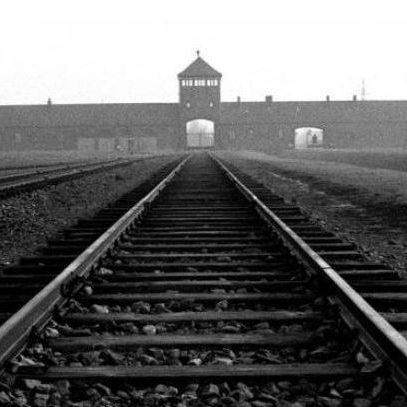World War II shook us deeply. Auschwitz stories reveal Nazi genocide. They depict one of humanity’s darkest periods.
We learn about survivors’ lives from their stories. They fought daily horrors to maintain their humanity.
About 1% of Germans were Jewish pre-war. Nazis deprived them of rights and lives. Auschwitz killed over 1.1 million people.
Not only Jews suffered at Auschwitz. Other victims included disabled people, Poles, Roma, Sinti, Soviet prisoners, Jehovah’s Witnesses, and others deemed undesirable.
World War II’s Auschwitz was cruel. Nazi genocide peaked then. We honor the victims’ bravery. The stories they tell emphasize the importance of history.
The Pervasive Horror of Auschwitz in World War II History
World War II is forever changed by Auschwitz. Holocaust atrocities occurred here. It began with Polish political prisoners but became central to the Nazi plan to kill Jews and others.
Massive Auschwitz horrors showed how the Nazis planned their genocide. In 1943, Auschwitz II-Birkenau had four crematoria and gas chambers. Daily, Zyklon-B gas killed thousands.
Rudolf Höss and Josef Mengele were key perpetrators. Höss killed over a million people. Mengele experimented cruelly. Their actions revealed these camps’ extreme cruelty.
Auschwitz shows the Holocaust’s scope and victims’ stories. Over 1.1 million of 1.3 million sent there died. Since most were Jews, the Nazis wanted to exterminate them. Romani and non-Jewish Poles also suffered.
Despite clear evidence, few SS were prosecuted. Only 15% of Auschwitz’s criminals were tried.
Auschwitz symbolizes humanity’s worst. UNESCO World Heritage Site with museum. These mark the suffering and urge us to teach future generations about these horrors. They want to prevent such cruelty.
Personal Testimonies: The Auschwitz Victims’ Narratives
Firsthand accounts from Auschwitz survivors are crucial. They describe one of history’s darkest periods. Charlotte Delbo and Jean Améry reveal their stories. Stories remind us to remember and reflect.
Jean Améry describes the brutality he witnessed and experienced. Charlotte Delbo recounts how people survived death and hopelessness.
Many victims, from Améry to ordinary people, share their stories. The camps are better understood through these stories. They depict campers’ mental and physical struggles.
A table with survivor story and history facts follows. At Auschwitz, fear and survival were huge:
| Statistic | Data | Context |
|---|---|---|
| Survival rate of transported Hungarian Jews | Less than 10% | Shows how many died during and after going to Auschwitz |
| Number of survivors from Bótrágy | Approximately 10 out of 100 | Tells the sad story of loss from a small village |
| Estimated death toll at Auschwitz | Between 1.1 million and 1.5 million | Points out Auschwitz as a very deadly camp |
| Children’s survival rate among deported Hungarian Jews | Only two out of approximately 100 | Shows how young people were very vulnerable |
| Daily mass executions | Between 12,000 and 13,000 daily | Shows the daily horror of Auschwitz |
These stories and facts are key to keeping the Holocaust memory alive. They make sure we don’t forget or deny what happened. By reading about Auschwitz, we can learn and try to stop such things from happening again.
Life under the Shadow of Auschwitz: Camp Conditions and Survival
In Auschwitz, conditions were terrible. People passed through terrible places and heard much suffering. Stories have been told for years.
Holocaust survivors recount their hardships. Bergen-Belsen and Dora-Nordhausen are discussed as Nazi slave labor camps.
Ghetto residents fought for dignity. Warsaw and Lodz suffered under Nazi rule. They also degraded people through camp labor.
| Camp | Prisoner Capacity | Estimated Deaths |
|---|---|---|
| Auschwitz I | 15,000-20,000 | Est. 1.1 to 1.5 million |
| Birkenau (Auschwitz II) | Up to 90,000 | Majority of Auschwitz deaths |
| Auschwitz III (Monowitz) | Approx. 10,000 | Counted within Auschwitz I deaths |
It was hard to survive Auschwitz. People endured much. Alfred ‘Freddie’ Knoller and Toby Biber recount. They say the Nazis treated people like nothing.
Premysl Dobias was in many camps, including Mauthausen. He discusses mental and physical pain. Nazis broke up families and stole identities.
The numbers show how bad camps were. The Auschwitz was harsh. We must remember these stories to honor survivors.
The camps were terrible, but there was hope. Resistance and cooperation stories matter. Even in difficult times, they demonstrate human strength.
The Denial and Concealment of Genocide: Countering Distortion
We learned about the genocide after WWII. The Nazis hid the Holocaust. They concealed their crimes with secret documents and kind words.
They called their murders “action” and “special treatment”. This concealed the truth. They wanted to appear good.
Nazis tried to erase their crimes. Human remains were burned in mass graves. Survivors and Nazis recounted the events. They recounted horrors.
Some deny the Holocaust despite all the evidence. This is “new antisemitism”. Denial helps hate groups spread.
But historians and experts say the Holocaust happened. They have lots proof. We use the 2013 Holocaust Remembrance Alliance definition to fight lies.
The US and other nations support this definition. It increased Holocaust education and awareness. The UN accepted this definition in 2022. This emphasizes the need to preserve truth.


